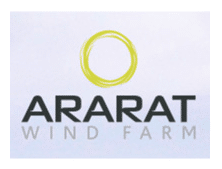The 240MW Ararat Wind Farm in Victoria is now operational, with all 75 of its GE turbines now feeding energy into the grid.
The project, commenced in 2015, also has an agreement to provide the ACT with 40 per cent of electricity produced from the site.
The Ararat project is co-owned by a consortium of RES, GE, Partners Group on behalf of clients and OPTrust, and is operated and managed by local company Windlab.
“Once again the ACT is leading the way by reaching key milestones as we progress towards our ambitious renewable energy targets,” said ACT Climate Change Minister Shane Rattenbury.

Wind power part of the ACT’s renewable energy 2020 plan
The ACT aims to generate 100 per cent of its power from renewable energy sources by 2020.
The Ararat Wind Farm is located on rural land located approximately 180 kilometres northwest of Melbourne, near the town of Ararat.
The hills around Ararat were identified as a suitable location for wind energy generation in 2007 by project developer RES.
The project was submitted to the Minister for Planning in January 2010 and was approved in October 2010. Further planning applications for the grid route and substation to connect the wind farm to the main transmission network were approved in 2012 and construction on the wind farm began in 2015.
The last of the turbines was erected in February 2017, at which time 61 of the 75 turbines were already commissioned and contributing to Victoria’s and the ACT’s supply of renewable energy and showcasing the potential of the renewable industry in Australia.
Ararat Wind Farm specifications
Some fast facts about the Ararat Wind Farm
- 75 GE 3.2-103 wind turbines are installed on site
- 240MW installed capacity
- Enough electricity to supply 120,000 Victorian homes p.a.
- Blades are 50m in length and weigh 9T each
- Each turbine’s gravity foundation consists of 350m3 of concrete, 35T of reinforcing steel (embedded 3m into the ground), 108 bolts and are 17m wide
- Turbines are 135m to the top of the blade. This is referred to as tip height
- The rotor diameter is 104m
- The main assembly crane required to erect the turbines weighs 600T
- 62km of trenches are required for the electrical cables to carry electricity back to the onsite substation
- 230km of single core electrical cable is required to connect the turbine generators to the substation











































